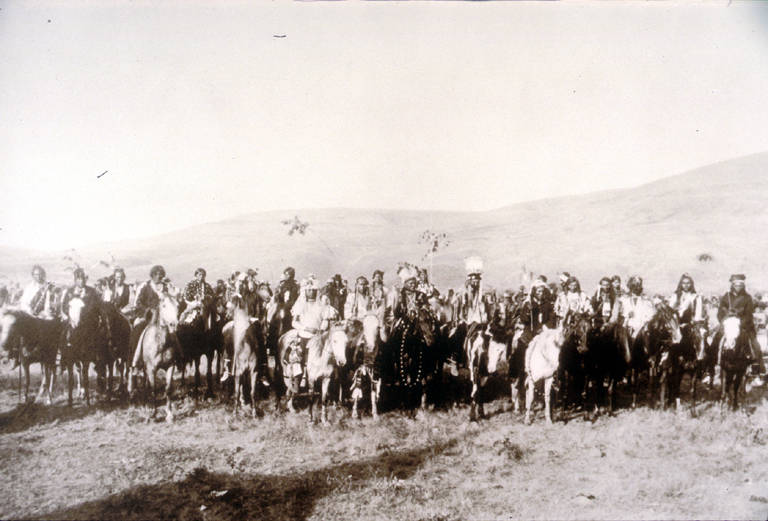
Since the very beginning of the European invasion of North America, Europeans have been guided by an arrogant worldview in which they considered themselves superior to all other peoples and they therefore had the right, given to them by their god, to impose their way of life on other people. In the nineteenth century, this worldview had evolved into the idea of Manifest Destiny.
In his book The Bitter Waters of Medicine Creek: A Tragic Clash Between White and Native America, Richard Kluger describes Manifest Destiny this way:
“God had assigned the American people, robust and pure of heart, to spread the gospel of liberty and democracy around the earth—well, certainly across all of North America—and prosperity and happiness would follow.”
Manifest Destiny was seen as a divine mission not only to conquer the land, but also to impose their special American way of life on the Native peoples they encountered. Under this viewpoint, American Indians were seen as having no religion, no morality, and no laws.
From the Euro-American viewpoint, Indians were all the same and cultural differences were, and often still are, unseen. During the nineteenth and twentieth centuries, the European concept of “tribe” was imposed upon Indian nations, generally creating, at least in the eyes of the American government, tribes which had no aboriginal reality. It was felt—and often still is felt—that if Indian people shared a common language, perhaps some common cultural ceremonies, and some sort of past heritage, then they must constitute a single tribe.
The Pacific Northwest
In the Pacific Northwest—the area which would later become Oregon, Washington, and Idaho—the European invasion began in the early nineteenth century with fur traders (primarily from the London-based Hudson’s Bay Company and the Canadian North West Company), followed by American missionaries and farmers. Ignoring the sovereignty and territorial rights of the many Indian nations who had lived in the area for thousands of years, both Great Britain and the United States claimed that they, as Christian nations, they had the right to rule the territory. The dispute between these two nations was finally resolved in 1846 and in 1848 the United States created Oregon Territory.
In 1842, before the territorial dispute was settled, the United States appointed Elijah White as the American Indian agent for the territory. In his book The Nez Perce Indians and the Opening of the Northwest, historian Alvin Josephy describes Elijah White:
“He was a scheming man, swollen with the importance of an appointment as subagent for Indian relations in the Oregon country, the first officer of any kind named by the United States for that region, which was still jointly claimed by Great Britain and the United States.”
Ethnohistorian Robert Boyd, in his book People of the Dalles: the Indians of Wascopam Mission, describes him this way:
“White was a contentious sort and somewhat of a flimflammer.”
The Nez Perce
The Nimipu were given the designation Nez Perce (“pierced noses”) by the French fur traders. Their homeland was in the area of the Snake and Salmon Rivers which are tributaries of the Columbia River.
With regard to language, Nez Perce is classified as belonging to the Sahaptian language family. This means that the Nez Perce language is distantly related to languages such as Yakama, Umatilla, Palouse, and Wanapam.
Prior to the coming of the horse, the village was the primary political unit and decision-making involved all of those in the village. There was no political organization or government which united the autonomous villages and/or bands. The Nez Perce Tribe, in their book Treaties: Nez Perce Perspectives, puts it this way:
“We had (and needed) very little political organization beyond the band headmen and peace leaders who insured the safety and provisioning of the women, elderly, and children.”
The Nez Perce band was composed of several villages or camps which were located along a stream. Band names were usually taken from the most prominent village within the band’s territory. Each village had a council which selected and advised a village leader. Anthropologist Deward Walker, in his book Conflict and Schism in Nez Perce Acculturation: A Study of Religion and Politics, reports:
“Village leadership was in the hands of the eldest, able male in most instances, this position being semi-hereditary but also based on individual ability.”
Walker prefers to call this leader a “headman” rather than a chief. With regard to the role of the Nez Perce headman, historian Alvin Josephy, in his book Nez Perce Country, reports:
“His duties were to arbitrate disputes, act as spokesman, oversee the well-being of the villagers, and provide an example of outstanding and generous conduct, sharing his wealth with the needy. In return, the people often gave him food, clothing, and other goods, especially for settling arguments.”
While the bands shared the same language and culture, there was no integration of the various Nez Perce bands into a larger government structure. However, after the adoption of the horse, many of the bands formed loose, temporary alliances with each other for making forays across the Rockies and into the Plains for hunting and warfare.
Imposing Laws on the Nez Perce
In 1842, Elijah White held a council with the Nez Perce in Lapwai, Idaho. Unconcerned with the fact that the Nez Perce were a sovereign nation and that the United States had not established any jurisdiction over them, he imposed on them a set of “laws” under which they were to live. Ethnohistorian Robert Boyd, in his book People of the Dalles: the Indians of Wascopam Mission, writes:
“The 1842 law code created considerable systemic disruption within the Indian cultures affected by it and resulted in confusion and resentment that eventually contributed to a backlash against those who forced it upon its unwilling subjects.”
The Nez Perce Tribe puts it this way:
“To put it mildly, this system of government was not one the tribe adopted easily or even willingly.”
In his book An Arrow in the Earth: General Joel Palmer and the Indians of Oregon, Terrance O’Donnell writes:
“Having delivered his laws like Moses from the mount, White lectured the Nez Perce on the evils of begging, distributed fifty hoes to the ‘industrious’ poor, and departed, well satisfied with himself.”
In addition to the “laws”, White also ordered the Nez Perce to choose a single chief as high chief and to have all of the other chiefs subordinate to him. White ignored the fact that the Nez Perce were really more than 40 culturally affiliated but autonomous bands. According to historian Alvin Josephy, in his book The Nez Perce Indians and the Opening of the Northwest:
“White’s undemocratic and tyrannical scheme was too great a break with the cultural traditions for the leaders of the autonomous Nez Perce bands and villages to understand.”
Ellis was designated as high chief. Ellis had received a Christian education at the Red River mission school in Canada and was able to speak, read, and write English.
The new “laws” and form of government were alien to the Nez Perce and were ignored by most of the autonomous, independent bands and their leaders. Later attempts to impose new government and Christianity on the Nez Perce would result in the 1877 Nez Perce War.
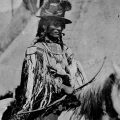
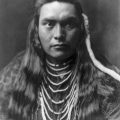
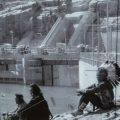
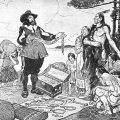
Leave a Reply